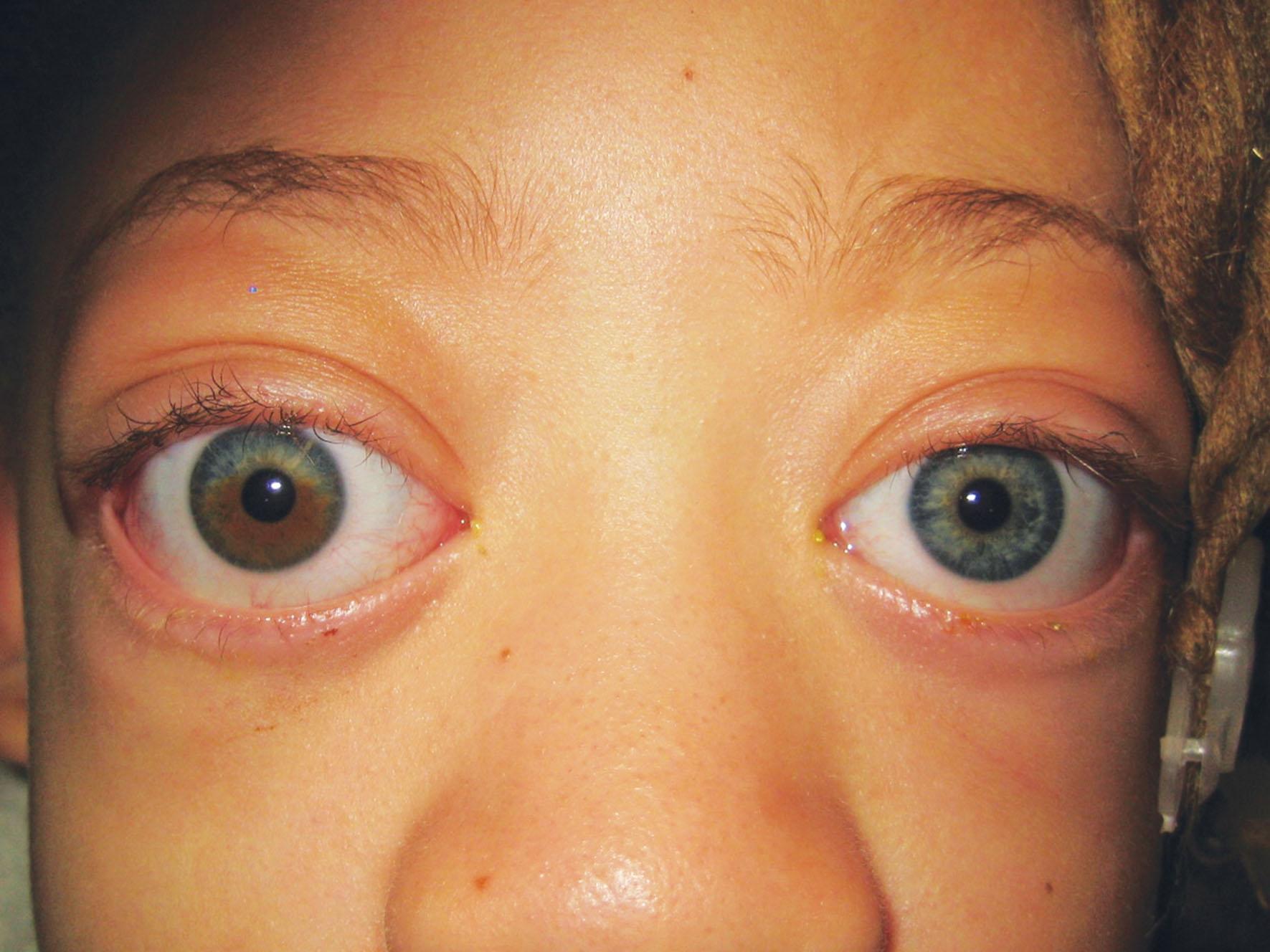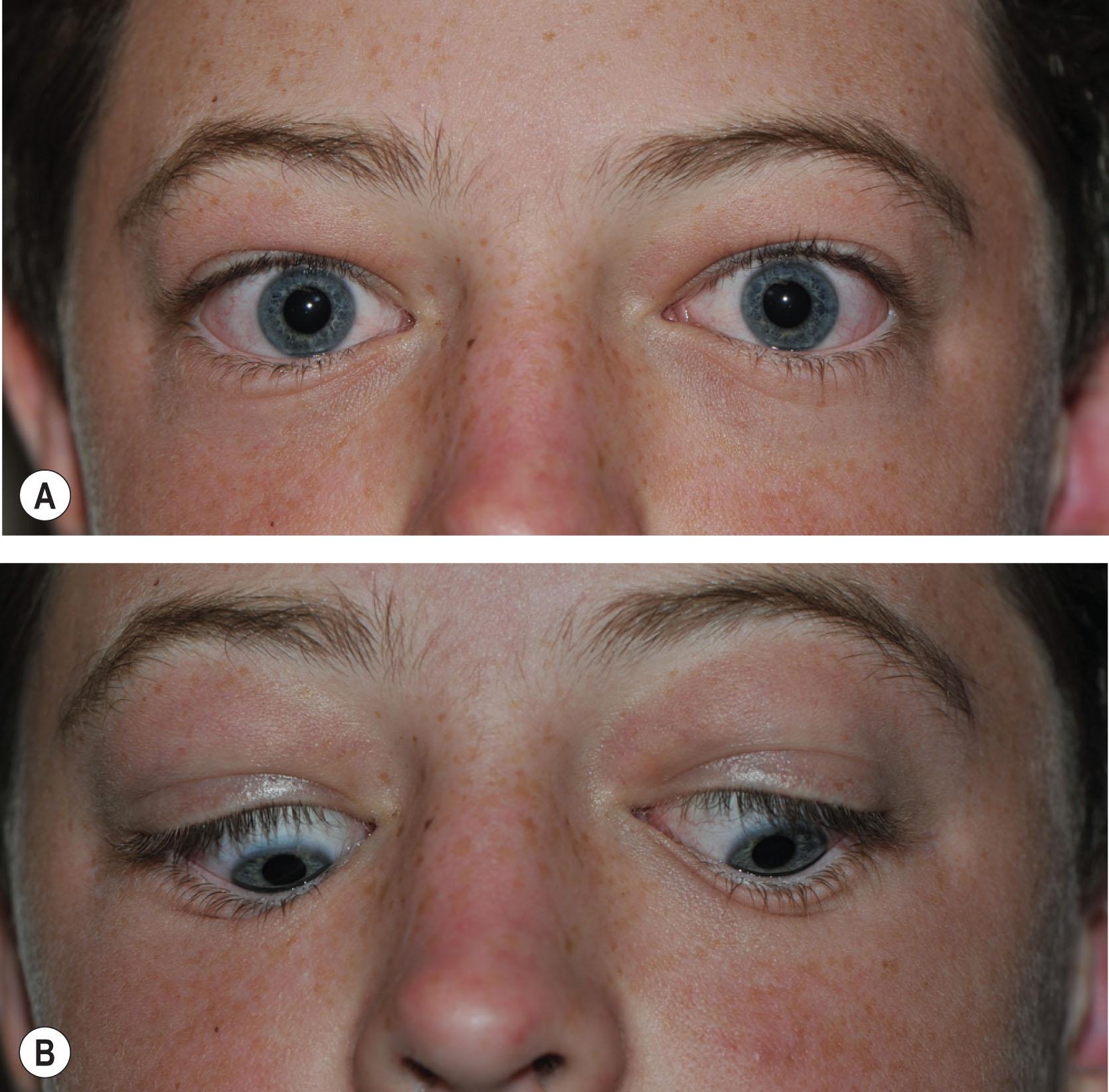Physical Address
304 North Cardinal St.
Dorchester Center, MA 02124
Non-infectious orbital inflammation in childhood is uncommon. As in adults, the commonest cause is thyroid-associated orbitopathy (TAO). The remainder can be divided into: (1) specific forms of inflammation, which include granulomatosis with polyangiitis (GPA, previously called Wegener granulomatosis), sarcoidosis, and the more recently characterized entity of immunoglobulin (Ig) G4-related ophthalmic disease, and (2) non-specific orbital inflammation or idiopathic orbital inflammation (IOI). Infective orbital inflammation is most commonly due to bacterial orbital cellulitis and this is discussed in Chapter 19 .
TAO is by far the commonest cause of proptosis in adults, but it is relatively rare in children. In most series, about half develop ophthalmic signs. Despite its relative rarity, if several large series of orbital disorders are combined, TAO is the second commonest cause of orbital disease in childhood after orbital cellulitis ( Table 19.1 ). Neonatal TAO may affect the infant of a mother with Graves disease, due to transplacental passage of thyroid-stimulating hormone receptor and other antibodies. In the neonate, it tends to be a self-limiting disease.
Although TAO may occur in early childhood, it becomes commoner in the second decade of life ( Fig. 28.1 ). It is more prevalent in girls, by a ratio of between 2 and 7 : 1. There is commonly a family or past history of hyperthyroidism. Associations with other autoimmune disorders and diabetes have been reported. Identifiable risk factors for the development of TAO include smoking (as in adults), elevated levels of TSH receptor antibody, and high levels of T4. Most patients will be hyperthyroid at the time of diagnosis of TAO (88.6%), with a small number being hypothyroid (2.9%) or euthyroid (8.6%).

The orbital involvement is generally relatively mild, and signs of active inflammation are generally absent. There may be proptosis, sometimes asymmetric, which rarely warrants orbital decompression. Lid retraction and lagophthalmos are also common ( Fig. 28.2A,B ). In East Asian children, an acquired form of lower lid epiblepharon with trichiasis may develop and lead to keratopathy.

The incidence of strabismus in pediatric TAO is low, with only 1 affected in one series of 67, although a smaller series found a higher rate of 24% in older post-pubertal children, approaching that seen in adults ( Fig. 28.3A,B ). The severity of the orbitopathy tends to increase with age. Sight-threatening corneal problems have not been described in children. Very rarely optic neuropathy has been described, with two cases in Black male adolescents reported as responding to pulsed intravenous methylprednisolone. Orbital imaging may show enlarged muscles ( Fig. 28.3C ) with characteristic sparing of the tendons, or an increase in orbital fat volume.

Treatment is usually conservative with supportive measures. Eyelid or orbital decompression surgery is rarely required, but when performed for unacceptable proptosis and corneal exposure, the outcomes are generally good.
The most common cause of orbital inflammation in childhood is bacterial orbital cellulitis (see Chapter 19 ). Other childhood orbital inflammatory diseases are comparatively rare, and may be called “specific” when they have a defined clinical, radiologic, biochemical, and histopathologic spectrum, though their underlying cause has not been clearly determined.
This is a necrotizing granulomatous vasculitis, which has a predilection for the upper and lower airways and the kidneys. The limited form of the disease, more usually seen in adults, in which the kidneys are spared, has a better prognosis and is more commonly associated with orbital disease. In all age groups, both forms have the same incidence of ocular and orbital involvement, ranging in different studies from 28% to 45%. Before the introduction of cyclophosphamide, over 90% of affected patients died within 2 years. Although this is not a common disease of childhood, it can occur in the first decade of life and its rarity in childhood often leads to a delay in diagnosis.
Become a Clinical Tree membership for Full access and enjoy Unlimited articles
If you are a member. Log in here